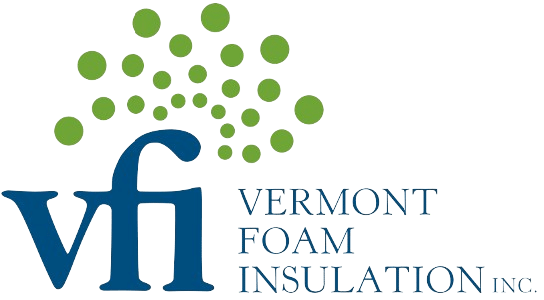Creating proper airflow in your attic is an important step toward a comfortable and healthy home. Not enough attic ventilation and airflow can be bad both in the summer and winter. In the summer months, hot air will get trapped inside your attic and radiate back into your home. This can make it harder for your air conditioner to cool your home, which can lead to higher summer electricity bills. In the winter, warm air from your house can leak into your attic and create condensation on the underside of the roof sheathing. This is not good for efficiency nor durability for your Bennington, Dorset, or Manchester home.
Poor attic airflow and ventilation can cause:
-
Uncomfortably hot summer conditions
-
Condensation and frost in your attic
-
Mold and mildew growth
-
Shorter roof lifespan
Create Controlled Attic Airflow with Inlet Vents and Exhaust Vents
Creating continuous and controlled airflow will help keep your attic cool and dry, preventing the issues outlined above. To achieve this, at the eaves of your roof you’ll need inlet vents to bring fresh air in and, at the peak of your roof you’ll need exhaust vents to push that air back out.
Intake Vents
Intake vents are installed along the soffit of your house that connects directly with the attic without compromising your insulation. These vents create a controlled draft that enters your roof at its lowest point. Intake vents come in a variety of sizes and styles. Rectangular soffit vents and continuous soffit vents are the most common.
Exhaust Vents
Exhaust vents are installed at the top of your roof. The air that is sucked into your attic through your intake vents is expelled through vents at the top of your roof, thus creating continuous airflow. Options for exhaust vents include ridge vents, roof vents, and gable vents. However, gable vents are not typically installed on their own. Instead, they are used to supplement another form of roof ventilation.
Prevent Uncontrolled Air Infiltration with Insulation and Air Sealing
The key to proper attic ventilation is control. Without wind, air predominantly moves vertically, so warmer, buoyant, less-dense air rises causing negative pressure, or suction, down low. Making sure you have enough openings down low and up top is critical. Allowing this convective loop to take place is important while simultaneously not disturbing the layer of insulation on your attic floor. That is why, in addition to soffit vents, attics should also have baffles which direct the air flow into your attic while simultaneously preventing the air from going into your insulation.
Most attics are not airtight and are in fact full of small gaps and cracks, called air leaks. These openings are often found around recessed lighting, electrical and ductwork penetrations, windows, and attic hatches. Spray foam insulation can be used to close these openings, in a process called air sealing. Spray foam insulation is one of the most effective types of attic insulation because it can prevent air and moisture intrusion. Additional attic insulation can then be installed on top of the air sealing measure to further help stop heat transfer into the attic.
Together, air sealing, insulation, and ventilation will keep your attic cool and dry, leading to a more comfortable, more efficient, and healthier home.
Roof Venting, not to be confused with household ventilation and Indoor Air Quality
Unrelated but often confused with roof/attic ventilation is household ventilation. Household ventilation is a separate subject. This type of airflow if uncontrolled can cause other problems in your home, like poor energy efficiency, draftiness, increased energy costs, and reduced indoor air quality. Because of this, you need to stop uncontrolled air infiltration in addition to installing controlled ventilation methods. It is another topic for another day!
Not Sure Where to Begin?
Give us a call! Since 2006, homeowners throughout Vermont and New Hampshire have trusted us as their spray foam insulation contractor, and we’re proud to be known as the area’s premier insulation company. Call us today to learn more about our services and see how we can improve your attic!








